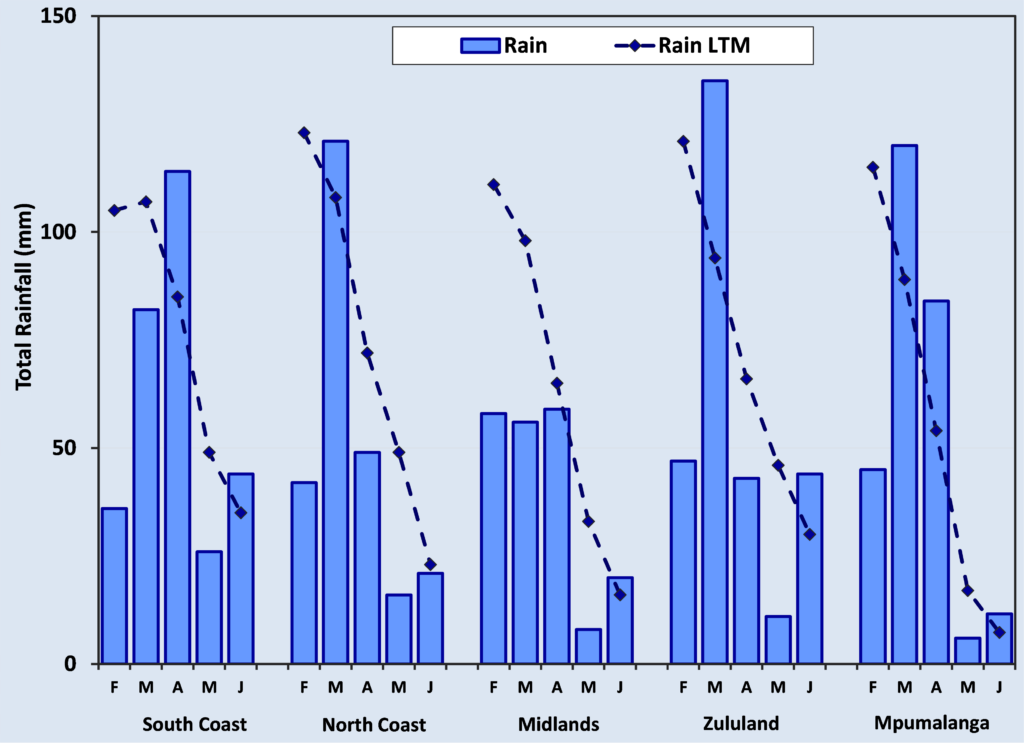Review
Rainfall during the review period (February to June 2024) was generally characterised by long dry spells, interrupted by sporadic heavy downpours. The average rainfall over that period was below the long-term mean (LTM) especially for the North Coast, Midlands and Zululand regions (Figure 1). In March, the northern irrigated areas received heavy rainfall associated with tropical storm, Filipo, while parts of the South Coast recorded high rainfall associated with cut-off-low pressure systems during April and early June. On 3 June, a tornado ripped through Tongaat and sounding areas in the North Coast, with golf-ball-sized hail and wind speeds of up to 265 km/h recorded in its path. The tornado left a trail of extensive damage to homes and infrastructure and, sadly, resulted in the loss of life. The associated losses for the affected farming enterprises were estimated to be several millions of rands.
There were no irrigation water restrictions in place over the review period while load-shedding remained suspended since late March.

Figure 1: Regional average monthly total rainfall for February to June 2024 compared to the corresponding long-term means (LTM).
Outlook
Oceanic and atmospheric indicators are now aligned with ENSO-neutral conditions which are expected to persist for the rest of the 2024 winter season before transitioning towards La Niña during spring. La Niña is the most likely category during the 2024/25 summer season (Figure 2). La Niña conditions are generally associated with normal to above normal summer rainfall in eastern South Africa.

Figure 2: Climate model forecasts for the Niño-3.4 temperature anomalies for 2024/25. Source: NOAA Climate.gov
The International Research Institute for Climate predicts normal rainfall during the 2024 spring season and slightly above average rainfall during early summer (October to December 2024) while the European Centre for Medium-Range Weather Forecasts predicts near normal spring and early summer rainfall. Above average temperatures are expected.
Please visit the SASRI WeatherWeb https://sasri.sasa.org.za/weatherweb for the latest industry weather reports and links to up-to-date seasonal climate forecasts.

